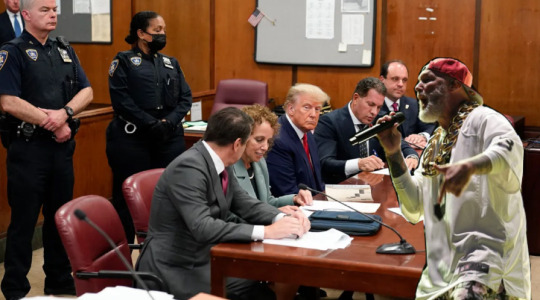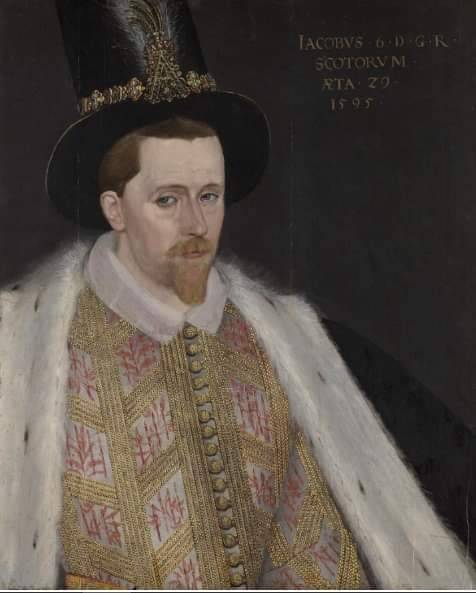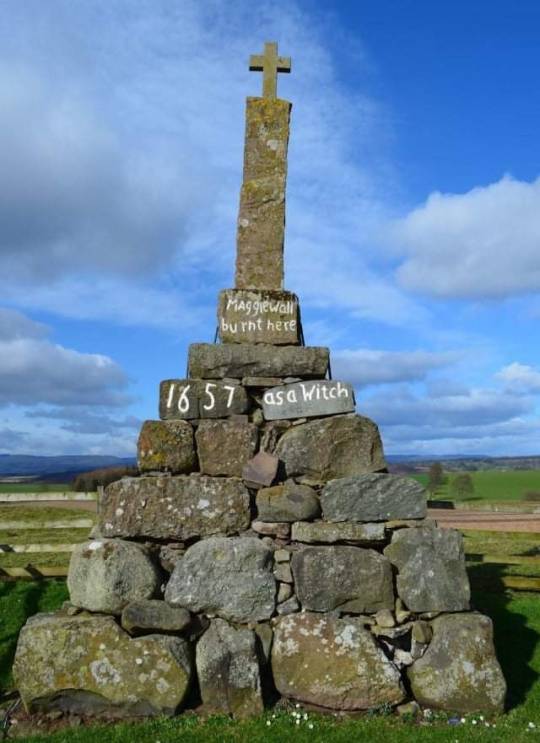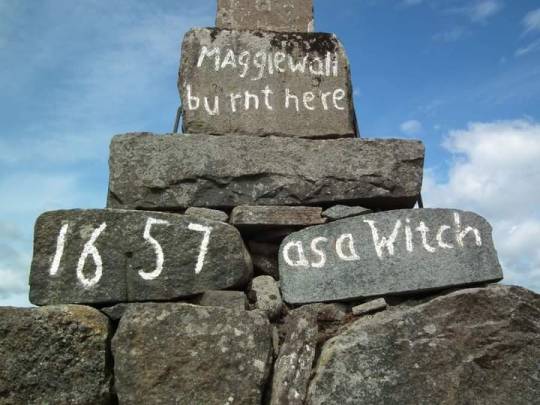#durst trial
Text

youtube
#lord of the rings#lotr#lord of the rings the hunt for gollum#the office#the office reboot#olympics#paris olympics#olympics on peacock#disney+ bundle#disney+ max#x-men#x-men 97#baby reindeeer#fallout#fallout finale#the circle#the circle season 6#challengers#challengers movie#the jinx#the jinx part 2#the jinx part II#robert durst#durst trial#podcast#Youtube
1 note
·
View note
Text
Trump Trial Erupts Into Chaos During Limp Bizkit Halftime Performance

NEW YORK CITY, NEW YORK - Causing billions of dollars in damages, today former President Donald Trump’s trial over his alleged use of hush money erupted into chaos during the halftime performance by New Metal band Limp Bizkit. The halftime show began about two hours into the trial, when Judge Juan Merchan called a recess and brought the band in to perform.
According to reporters who were at the trial, everything went smoothly for the first two songs, but when the band began playing their hit song “Break Stuff”, that’s when things started getting hectic. The legal experts were already getting extremely rowdy jamming to some of Limp Bizkit’s greatest hits, but when Fred Durst began singing about how he was so angry that he could just break stuff, that’s when they started taking it a little too far. The legal experts began moshing, which eventually turned into large scale riots, resulting in looting and destruction of property.
Durst tried to stop the commotion by making the appealing offer of him quitting music forever if they stopped rioting, but it was no use, as in a matter of minutes, the mob of legal experts had already set the courthouse into flames, and the police and fire department had to be called to contain the situation. When it was all set and done, the incident caused billions of dollars worth of damages, which many people blame Limp Bizkit for. Fred Durst, however, refutes these claims.
“It ain’t my fault that I make bangers that amp motherfuckers up!” Durst exclaimed. “If they ain’t want to hear real music that gives people real emotions, then they shouldn’t have invited our asses, because as I see it right now, that was the realest night in modern American history, son.”
When the dust settled, it was estimated that 18 people had died and 20 more people were severely injured as a result of the halftime performance. As a result of this, halftime performances have officially been banned for all court cases in the United States.
#satire#satirical#funny#parody#satirical news#political satire#donald trump#trump#trump trial#limp bizkit#fred durst
2 notes
·
View notes
Text






On October 22nd King James VI set sail for Norway to collect his bride Anne of Denmark.
King James VI of Scotland married Anne of Denmark in a proxy marriage ceremony in 1589. But when it came time for Anne to sail to Scotland to meet her new husband, that is when the real trouble began.
Anne’s ship was delayed by storms for so many months that James decided to sail to Norway, where she was stuck, and retrieve her. He too, had issues with the storms, but they finally reached Scotland in 1590.
It was during this turbulent time that it was first brought to James’ attention that witches might be responsible for the storms that caused the delay in Anne’s travels (and also caused the death of one her maids). Witchcraft and the hunting of witches was very popular in other parts of Europe at the time, in Scotland, witchcraft was against the law – although it mostly went unpunished before 1590.
Upon returning to Scotland, James had no fewer than seventy of his subjects rounded up on suspicion of bewitching his fleet and that of his new wife. He personally superintended the interrogation of many of the suspects, including the supposed ringleader – a 'wise woman' named Agnes Sampson. Taking 'great delight' in her torture, he was dismayed when she suddenly called a halt to the proceedings and beckoned the king to her. She then whispered something in his ear that made him go as white as a sheet. It transpired that she had repeated the very words that had passed between James and Anne on their wedding night – words that no other mortal soul could possibly have known. If James needed any further proof that witches existed, this was it. He sent Agnes straight to the flames. Thousands more of his subjects – both in Scotland and (after 1603) in England would perish for the same crime
The early seventeenth century, when the witch hunts were at their height, was dominated by fear and superstition. In an increasingly unstable and volatile society, people clung ever more tightly to their deeply-held superstitions – even those who claimed to have embraced the reformed religion. The Kingdom of Darkness was as real to them as the Kingdom of Heaven, and ordinary people everywhere believed in devils, imps, fairies, goblins and ghosts, as well as legendary creatures such as vampires, werewolves and unicorns. Everyone feared evil portents, such as a hare crossing one's path or a picture falling from the wall. A pregnant woman must avoid gazing at the moon because it would render her baby insane.
Children were frightened into obedience by their mothers or nursemaids with tales of evil witches, spirits, elves and fantastical creatures. Women were grouped together with the sick and infirm as being particularly susceptible to 'vain dreams and continual fear' as a result of their 'weakness of mind and body.' Even grown men were afraid of the dark, for this is when it was believed spirits most often appeared. 'Some never fear the devil, but in a dark night…especially in a churchyard, where a right hardy man heretofore scant durst pass by night but his hair would stand upright.'
In 1597, he published Daemonologie, a treatise on witchcraft that became so influential that it was republished several times and distributed across Europe. It inspired a witch hunting fervour of dangerous proportions, giving sanction to all manner of horrific persecutions. Those most at risk were women: as many as 95% of those convicted for witchcraft were female. Most were unmarried, poor and misfits in their community. Many had a 'familiar', such as a cat, dog or rat, which would supposedly help to carry out their evil spells.
The witch hunts also became a convenient way of getting rid of troublesome neighbours. The old saying that there was 'no smoke without fire' certainly held true here: an accusation was all that was needed to bring someone to trial, and a staggeringly high proportion of those who were hauled before the courts were found guilty.
Recently calls are growing for a national memorial to the thousands who were tortured and killed for their supposed black magic, there is one in Edinburgh, that is small and overlooked my most visitors to the castle, which it stands close to, many of those that were condemned to die were burnt on what is now the Esplanade, you will find it on what is the Tartan Weaving Mill. Further afield there is a collection of stones about 20 feet high, topped with a cross and decorated with gifts left by visitors—pennies, feathers, shells, fluffy stuffed animals, and tiny tea candles. The stones bear the words in stark white lettering: “Maggie Wall burnt here 1657 as a witch.” While this has become a shrine to “Maggie” and witches in general, there is no record she existed.
Nobody knows who built the memorial, nor do we know who regularly freshens up the white paintwork every so often. Maggie Wall's Memorial is located right outside of Dunning in Perth and Kinross. It is off of the road B8062 which you can access from the A9 highway.
I use the words judicial murder from time to time in my posts, those that died accused of witchcraft fall under the term, they were murdered, there is no other way to describe it.
11 notes
·
View notes
Text
I could never be a defense attorney. I could never lie for a murderer, rapist, or evil human being. The way these defense attorneys be lying for their clients because they were paid insane amounts of money is DISGUSTING. I think defense attorneys were created so the innocent can be defended & the guilty to be punished appropriately! Nothing else not getting the guilty acquitted or a mistrial because you are dismissing the oath of law.
I don’t know how these lawyers sleep at night knowing that a murderer, rapist, or evil person is free to wreak havoc on other’s lives. It’s disgusting to watch these trials while knowing the defendant is guilty. I could never become a liar for money. Defense lawyers are sociopaths it’s no other word to describe them. It’s no way they can have a normal home life if they are lying in the court of law everyday.
How could Johnny Cochran(OJ Simpson lawyer) sleep at night, how could Dick DeGuerin(Robert Durst lawyer) sleep at night, how could Jennifer Bonjean(Bill Cosby lawyer) sleep at night, & so many other lawyers like John Gotti’s lawyers.
It’s a disgrace to law. That’s why people don’t believe in the justice system. It’s so rigged & it’s stomach turning evil!
#lawyers#defense lawyers#defense lawyer#johnny cochran#Dick DeGuerin#Jennifer Bonjean#oj simpson#bill cosby#robert durst#sociopaths#pathological liars#it’s a disgrace
3 notes
·
View notes
Text
Day 3,873: Parity
We’re watching The Jinx: Part Two finally, which is coverage of the Robert Durst trial, and tonight its just making me think about the fact that some people will literally like you just because you’re rich. I get it, truly. Money makes almost anything possible, at least when it comes to navigating through the world. It can’t touch anything on the inside, really, but it’s the most powerful force…

View On WordPress
0 notes
Text
And it takes its toll // Fergus // Trial 4.3 // Re: He still hates that clown, sorry..
Fergus swallows down the embarrassment and weathers the anger thrown his way with gritted teeth. It hurts, sure, but it doesn’t matter if his hide gets a few more scars, doesn’t matter if Alfie or Giselle or anyone else will hate him after this, doesn’t matter if he gets voted by one or two people so long as the ending is as it should be. And yeah, maybe he’s a snake for playing the recording, but to him it was a clear-cut - being friends with Bonbon is not an exemption. Bonbon, much like himself, can’t be trusted with people. Fergus knows too well himself how easy it can be to hurt someone you love, and how little difference there is between an enemy and a loved one when all you see is red.
What’s that thing they say about rose colored glasses? Well, maybe finally after this trial, some people will take off theirs.
Fergus doesn’t say much, just leaning back on his chair, arms once more crossed over his chest. He’s said his piece, he’s brought up what he thinks needs to be brought up, he’s voted. Everyone else seems to be directing the conversation to its rightful terminus without him interjecting.
The only moment that makes him once more almost stand up is when Morgan votes himself.
“Morgan, ye absolute fuckin’ idiot, ye better not – do ye have fuckin' saw durst fer brains-- !!”
But he’s interrupted by Yukari and Sunako. He stops mid sentence, looking between the two of them, mouth opening and closing. Despite Sunako doesn’t say much, it’s enough to calm Fergus down, make it feel like Morgan’s out of the woods, somehow. Which he knew, of course… he knew. Yeah.
“... I think this oughta convince the rest of ye that it wasn’t Morgan, at least.” He sits down on his chair, feet a bit wobbly. He glances to the side back at Sunako. “But I don’t think we’re afforded somethin’ as nice as just not playin’ by the rules… and, besides, do ye want for the killer to get away with this?”
He scoffs and shakes his head.
“Feat of athleticism and strength? Check. Good hand-eye coordination to break the cameras? Check. Presentation? Check. Able to work with stage sets and pulleys and such? Check. Needing to keep their clothes clean because they’re hard to change, or wanting to disguise themself because they’re easily recognizable? Both, check. Able to clean up fast and set up things fast? Check.”
“... It’s ye, Bonbon. I started to doubt it was ye right in the beginnin’, and nothing said during this trial has swayed me. Ye can either fess up or we can see ye in the act, I don’t care. But that doesn’t change the what really happened out there.”
0 notes
Video
youtube
Trial Talk: Chad Daybell, Mollie Tibbetts, Robert Durst & George Floyd
1 note
·
View note
Text
every time i watch a new true crime series that has different cases for every episode i always find myself thinking “oh they left THIS PART out!” or “i can’t believe they didn’t include THAT THING!”
and i can’t help but think the question i should really be asking is WHY i know enough to notice AND be annoyed by EVERY DETAIL they don’t include.
i mean, i won’t... but i probably should.
#yo ho yo ho a true crime junkie's life for me#i have a favorite cold case prosecutor#(who is doing the robert durst trial and i am HYPE!)#and a favorite general prosecutor#AND a favorite forensic psychologist#(who was actually murdered not too long ago and i damn near cried tbh)#this is my life#these are my choices#here is who i am as a personal#true crime#about me#alys babbles
10 notes
·
View notes
Text
1 note
·
View note
Text
Robert Durst GUILTY of murdering best friend Susan Berman after trial sparked by chilling admission in HBO doc
Robert Durst GUILTY of murdering best friend Susan Berman after trial sparked by chilling admission in HBO doc
ROBERT DURST, the frail New York real estate heir who went on trial for murdering his best friend Susan Berman 20 years ago was found guilty by a jury on Friday \- years after his murder admission in an HBO documentary The Jinx. Durst, 78, was convicted of the first-degree murder for shooting Berman at ‘… ‘
Read Full Text

View On WordPress
#news#Politics#Robert Durst GUILTY of murdering best friend Susan Berman after trial sparked by chilling admission in HBO doc#Top#uk#us
0 notes
Text






On January 14th 1815 the Scottish publisher, printer, bookseller and politician William Creech died.
William was the son of Rev William Creech, a minister in Newbattle, he studied at Dalkeith and then The University of Edinburgh and was destined for the medical profession, but eventually became apprentice to Mr. Kincaid, a publisher and bookseller in Edinburgh. In the year 1766, Mr. Creech went upon a tour of the continent, in company with Lord Kilmaurs, son of the Earl of Glencairn. After his return, in 1771, he joined his former master, KIincaid into partnership.
William Creech published the first Edinburgh edition of Robert Burns’s poems, as well as works by Hugh Blair, Robert Fergusson and eminent physician William Cullen.
Although Burns called Creech “my friend, my patron”, he had to remind his publisher to pay him while he patiently waited in Edinburgh. Creech also published Sir John Sinclair’s ‘Statistical Account of Scotland’, a detailed parish-by-parish survey of the nation. as well as his own work, such as his musings on Deacon Brodie’s trial and execution, printed just days after he had served on the famous burglar’s jury. He was also a co-founder of Edinburgh’s Speculative Society, a debating club whose members included various great figures such as Sir Walter Scott and Francis Horner. The club still continues.
Creech hosted book auctions and weekly breakfasts at his shop, which became known as ‘Creech’s levees’ and was at the end of The Luckenbooth’s at St Giles Cathedral, you can see the Luckernbooths in the first pic of Creech’s Land, the shop was established by the subject of a post last week, the poet Allan Ramsay, Kincaid bought the shop in 1758, passing it on to Creech when he decided to concentrate on his publishing business.
In his personal life Creech was seen to be a bit of a character and was known for his “droll anecdotes” and his pleasant conversations.
The following was written by Creech in Sinclair’s ‘Statistical Account of Scotland’ published between 1791 and 1799.
In 1763 – Edinburgh was almost entirely confined within the city-walls. The suburbs were of small extent. Nicolson’s Street and Square, Chapel-street, the greater part of Bristo-street, Crichton-street, George’s Square *, Tevior-row, Buccleugh-street, St Patrick’s Square, &c. &c. to the south, were fields and orchards. To the north, there was no bridge; and (till of late) the New Town, with all its elegant and magnificent buildings, figures, squares, rows, courts, &c. extending upwards of a mile in length, and near half a mile in breadth, did not exist . It may with truth be said, that there is not now in Europe a more beautiful terrace than Prince’s Street; nor a more elegant street than George-street. The views from Queen-street, to the north, exhibit a scene of grandeur and beauty unparallelled in any city.
He died, unmarried, on the 14th of January, 1815.
You will no doubt have noticed the pic of Robert Burns, well it was William Creech who commisioned this portrait to be engraved for a new edition of Burns' poems, he in return wrote a lament for Creech;
Burlesque Lament For The Absence Of William Creech, Publisher
Auld chuckieReekie’s^1sairdistrest,
Down droops her anceweel burnish’d crest,
Nae joy her boniebuskit nest
Can yield ava,
Her darling bird that she lo’es best-
Willie’s awa!
O Willie was a witty wight,
And had o’ things an unco’ sleight,
Auld Reekieaye he keepit tight,
And trigan’braw:
But now they’ll buskher like a fright, –
Willie’s awa!
The stiffest o’ them a’ he bow’d,
The bauldesto’ them a’ he cow’d;
They durst nae mair than he allow’d,
That was a law:
We’ve lost a birkieweelworthgowd;
Willie’s awa!
Now gawkies, tawpies, gowks and fools,
Frae colleges and boarding schools,
May sprout like simmerpuddock-stools
In glen orshaw;
He wha could brush them down to mools-
Willie’s awa!
The brethren o’ the Commerce-chaumer
May mourn their loss wi’ doolfu’clamour;
He was a dictionar and grammar
Among them a’;
I fear they’ll now makmony a stammer;
Willie’s awa!
Naemairwe see his levee door
Philosophers and poets pour,
And toothy critics by the score,
In bloody raw!
The adjutant o’a’ the core-
Willie’s awa!
Now worthy Gregory’s Latin face,
Tytler’s and Greenfield’s modest grace;
Mackenzie, Stewart, such a brace
As Rome ne’er saw;
They a’maunmeet some itherplace,
Willie’s awa!
Poor Burns ev’n Scotch Drink cannaquicken,
He cheeps like some bewilder’d chicken
Scar’d fraeit’s minnieand the cleckin,
Byhoodie-craw;
Grieg’s gienhis heart anuncokickin,
Willie’s awa!
Now ev’ry sour-mou’d girnin blellum,
And Calvin’s folk, are fitto fellhim;
Ilkself-conceited critic skellum
His quill may draw;
He whacould brawlieward their bellum-
Willie’s awa!
Up wimpling stately Tweed I’ve sped,
And Eden scenes on crystal Jed,
And Ettrick banks, now roaring red,
While tempests blaw;
Butevery joy and pleasure’s fled,
Willie’s awa!
May I be Slander’s common speech;
A text for Infamy to preach;
And lastly, streekitout to bleach
In winter snaw;
When I forget thee, Willie Creech,
Tho’ far awa!
May never wicked Fortune touzle him!
May never wicked men bamboozle him!
Until a powas auld’s Methusalem
He canty claw!
Then to the blessed new Jerusalem,
Fleet wing awa!
Note To Mr. Renton Of Lamerton
Your billet, Sir, I grant receipt;
Wi’you I’ll canter ony gate,
Tho’ ’twere a trip to yonblue warl’,
Whare birkies march on burning marl:
Then, Sir, God willing, I’ll attend ye,
And to his goodness I commend ye.
You can find the poem on the Burns site below, it has hyperlinks on all the Scot's words for those who need them.
There is also a PDF with loads of Cqrech's work at the link below
9 notes
·
View notes
Text
Who is Robert Durst and what was the verdict of his trial?
Who is Robert Durst and what was the verdict of his trial?
ROBERT Durst who was the focus of a 2015 documentary series titled The Jinx is on trial for murder. The frail-looking 78-year-old denies killing his best friend two decades ago. Who is Robert Durst and why was he on trial? The 78-year-old is charged with killing Susan Berman, who was fatally shot in her home ‘… ‘
Read Full Text

View On WordPress
0 notes
Note
!!! since ur back on your true crime kick, would you recommend me some documentaries please? I’ve been trying to find more to a watch but don’t know where to start! ❣️❣️
I got youuuuu
so i don't know what you've already watched, but i've found these to be really good:
* The Staircase
* Paradise Lost (all 3 parts)
* O.J.: Made in America
* Amanda Knox
* Evil Genius
* I Love You, Now Die
* The Disappearance of Madeline McCann
* Trial by Media
* Heaven's Gate: The Cults of Cults
* Wild Wild Country
* The Confession Killer
* Conversations with a Killer: The Ted Bundy Tapes
* Night Stalker: the hunt for a serial killer
* The Trials of Gabriel Fernandez
* American Murder: The Family Next Door
* Don't Fuck with Cats
* The Keepers
* Crime Scene: The Vanishing at the Cecil Hotel
* Murder Among the Mormons
* I'll Be Gone in the Dark
* How to Fix a Drug Scandal
* Operation Varsity Blues: the College Admission Scandal
* Time: the Khalief Browder story
* The Sons of San: a descent into darkness
* Unsolved Mysteries
* The Confession Tapes
* the Innocence Files
* The Innocent Man
* Jeffrey Epstein: Filthy Rich
* The Jinx: The Life and Deaths of Robert Durst
um... yeah. this is a lot. ooops. trigger warnings apply for all of these, so be wary.
but yeah, happy watching!
#mary answers stuff#anonymous#true crime#documentaries#yes i've watched all of these#yes i'm a fairly well adjusted individual contrary to what this may suggest
18 notes
·
View notes
Photo






On October 22nd King James VI set sail for Norway to collect his bride Anne of Denmark.
King James VI of Scotland married Anne of Denmark in a proxy marriage ceremony in 1589. But when it came time for Anne to sail to Scotland to meet her new husband, that is when the real trouble began.
Anne’s ship was delayed by storms for so many months that James decided to sail to Norway, where she was stuck, and retrieve her. He too, had issues with the storms, but they finally reached Scotland in 1590.
It was during this turbulent time that it was first brought to James’ attention that witches might be responsible for the storms that caused the delay in Anne’s travels (and also caused the death of one her maids). Witchcraft and the hunting of witches was very popular in other parts of Europe at the time, in Scotland, witchcraft was against the law – although it mostly went unpunished before 1590
Upon returning to Scotland, James had no fewer than seventy of his subjects rounded up on suspicion of bewitching his fleet and that of his new wife. He personally superintended the interrogation of many of the suspects, including the supposed ringleader – a 'wise woman' named Agnes Sampson. Taking 'great delight' in her torture, he was dismayed when she suddenly called a halt to the proceedings and beckoned the king to her. She then whispered something in his ear that made him go as white as a sheet. It transpired that she had repeated the very words that had passed between James and Anne on their wedding night – words that no other mortal soul could possibly have known. If James needed any further proof that witches existed, this was it. He sent Agnes straight to the flames. Thousands more of his subjects – both in Scotland and (after 1603) in England would perish for the same crime.
The early seventeenth century, when the witch hunts were at their height, was dominated by fear and superstition. In an increasingly unstable and volatile society, people clung ever more tightly to their deeply-held superstitions – even those who claimed to have embraced the reformed religion. The Kingdom of Darkness was as real to them as the Kingdom of Heaven, and ordinary people everywhere believed in devils, imps, fairies, goblins and ghosts, as well as legendary creatures such as vampires, werewolves and unicorns. Everyone feared evil portents, such as a hare crossing one's path or a picture falling from the wall. A pregnant woman must avoid gazing at the moon because it would render her baby insane.
Children were frightened into obedience by their mothers or nursemaids with tales of evil witches, spirits, elves and fantastical creatures. Women were grouped together with the sick and infirm as being particularly susceptible to 'vain dreams and continual fear' as a result of their 'weakness of mind and body.' Even grown men were afraid of the dark, for this is when it was believed spirits most often appeared. 'Some never fear the devil, but in a dark night…especially in a churchyard, where a right hardy man heretofore scant durst pass by night but his hair would stand upright.'
In 1597, he published Daemonologie, a treatise on witchcraft that became so influential that it was republished several times and distributed across Europe. It inspired a witch hunting fervour of dangerous proportions, giving sanction to all manner of horrific persecutions. Those most at risk were women: as many as 95% of those convicted for witchcraft were female. Most were unmarried, poor and misfits in their community. Many had a 'familiar', such as a cat, dog or rat, which would supposedly help to carry out their evil spells.
The witch hunts also became a convenient way of getting rid of troublesome neighbours. The old saying that there was 'no smoke without fire' certainly held true here: an accusation was all that was needed to bring someone to trial, and a staggeringly high proportion of those who were hauled before the courts were found guilty.
Recently calls are growing for a national memorial to the thousands who were tortured and killed for their supposed black magic, there is one in Edinburgh, that is small and overlooked my most visitors to the castle, which it stands close to, many of those that were condemned to die were burnt on what is now the Esplanade, you will find it on what is the Tartan Weaving Mill. Further afield there is a collection of stones about 20 feet high, topped with a cross and decorated with gifts left by visitors—pennies, feathers, shells, fluffy stuffed animals, and tiny tea candles. The stones bear the words in stark white lettering: “Maggie Wall burnt here 1657 as a witch.” While this has become a shrine to “Maggie” and witches in general, there is no record she existed.
Nobody knows who built the memorial, nor do we know who regularly freshens up the white paintwork every so often. Maggie Wall's Memorial is located right outside of Dunning in Perth and Kinross. It is off of the road B8062 which you can access from the A9 highway.
I use the words judicial murder from time to time in my posts, those that died accused of witchcraft fall under the term, they were murdered, there is no other way to describe it.
42 notes
·
View notes